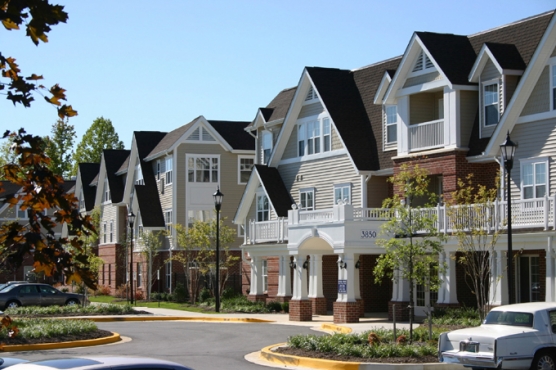 Housing needs can change with age. Just as people need options as they age to address changing health needs, people also need housing options. Often, health and housing needs are intertwined. For example, as mobility diminishes, one might need occasional assistance but can still live in their own home, but as more health problems are encountered, one might need to move into a long-term care facility to receive greater care.
Housing needs can change with age. Just as people need options as they age to address changing health needs, people also need housing options. Often, health and housing needs are intertwined. For example, as mobility diminishes, one might need occasional assistance but can still live in their own home, but as more health problems are encountered, one might need to move into a long-term care facility to receive greater care.
A broad spectrum of needs requires more options
What if people can no longer manage their home and want to live in close proximity to others but cannot pay for an expensive facility? What housing options do people have as they age? Most people think that they are limited to three options: living at home, in a retirement home, or in a long-term care facility. However, there is a broad spectrum of housing needs and the three conventional options are inadequate for today’s aging population. Not everyone wants to live alone at home or is capable of managing their homes without some level of assistance. And even those who do not wish to live alone may not need the full care and supervision of a long-term care facility or be able to afford the expensive price tags of retirement homes.
Know your options
Recognizing this need, more and more people across the country are exploring different options. One of the options that are currently being explored include intergenerational housing, which is where more than one generation of the same family live in the same house but often in separate units, typically involving a larger principal dwelling and another smaller secondary dwelling with a private bathroom and kitchen. These are sometimes called ‘granny flats’.
Another option is co-housing where unrelated individuals live together, each with their own private living space while sharing other common spaces such as the living room and kitchen. This example is seen in Barrie, Ontario through Solterra Co-housing Ltd. that facilitates and manages shared ownership of homes, where several seniors share the ownership of a home and its relative costs. They each have their own private bed room with an en suite and share common areas of the home, and they participate in the planning, design, ongoing management and maintenance of their shared residence. Solterra Co-housing Ltd. also provides in-home support services such as housekeeping, food shopping and preparation, and administering the household budget. More examples of what is taking place across the country can be found in Appendix A.
Know your needs to help you make your choice
In addition to care needs, many other factors and their level of important will help you to determine housing option is best for you. Such key factors can include:
- the level of independence and autonomy you would like to maintain
- level of care you need, e.g. light housekeeping, personal care, medical care, etc.
- affordability of the option
- proximity to your family, friends, the community, and essential services
To help compare the different options based on the above factors, the following is a comparison analysis of the different housing options. In addition to assessing each on the above factors, an analysis of each option’s pros and cons were completed as seen in the following Housing Options Comparison Chart.
Housing for all
People should not be limited to just retirement and long-term care homes. Alternative housing options have the potential to fill this gap and allow people to live their lives independently, safely, and affordably while maintaining high quality lives. A lot of work has been taking place across Canada to make housing options more attainable and available; however more is needed to meet the growing needs of the growing aging population.
CARP is calling for a complete spectrum of housing options that meets people’s housing needs and fills the gaps between the two conventional options. This means that housing options should allow people to remain engaged with their communities and have access to various levels of care in their own home according to their needs. It also means that housing options should be affordable and universally designed to increase accessibility so that people can live safe, healthy, and high quality lives.
Other resources:
Terminologies and concepts related to housing options
Difference between Retirement homes and Long-term care homes (Ontario specific)
Interactive map of nursing homes in Canada
Appendix A – Examples of alternative housing options across Canada
Solterra Co-Housing Ltd. – Barrie, Ontario- Through the help of Solterra, older home owners can share the ownership of a home and its relative costs, instead of paying rent. Owners participate in the planning, designing, ongoing management and maintenance of their shared residence. Each resident has their own bedroom and ensuite but share common spaces, such as the kitchen and living room, and also share the ongoing expenses of heat, hydro, taxes, water, sewage, insurance, and general household costs along with any in-home support services they may need.
Cohousing Association – Across Canada – Emerged from Denmark, cohousing neighbourhoods are made up of 10-35 households that are multigenerational, each owning their individual homes but clustered around a “common house” with shared amenities. The amenities can include a kitchen, dining room, guest rooms, home office supports, laundry, etc. Residents participate in the planning, design, ongoing management and maintenance of their community. The neighbourhoods are often designed to be environmentally-friendly and pedestrian-friendly with an emphasis on a rich sense of community.
